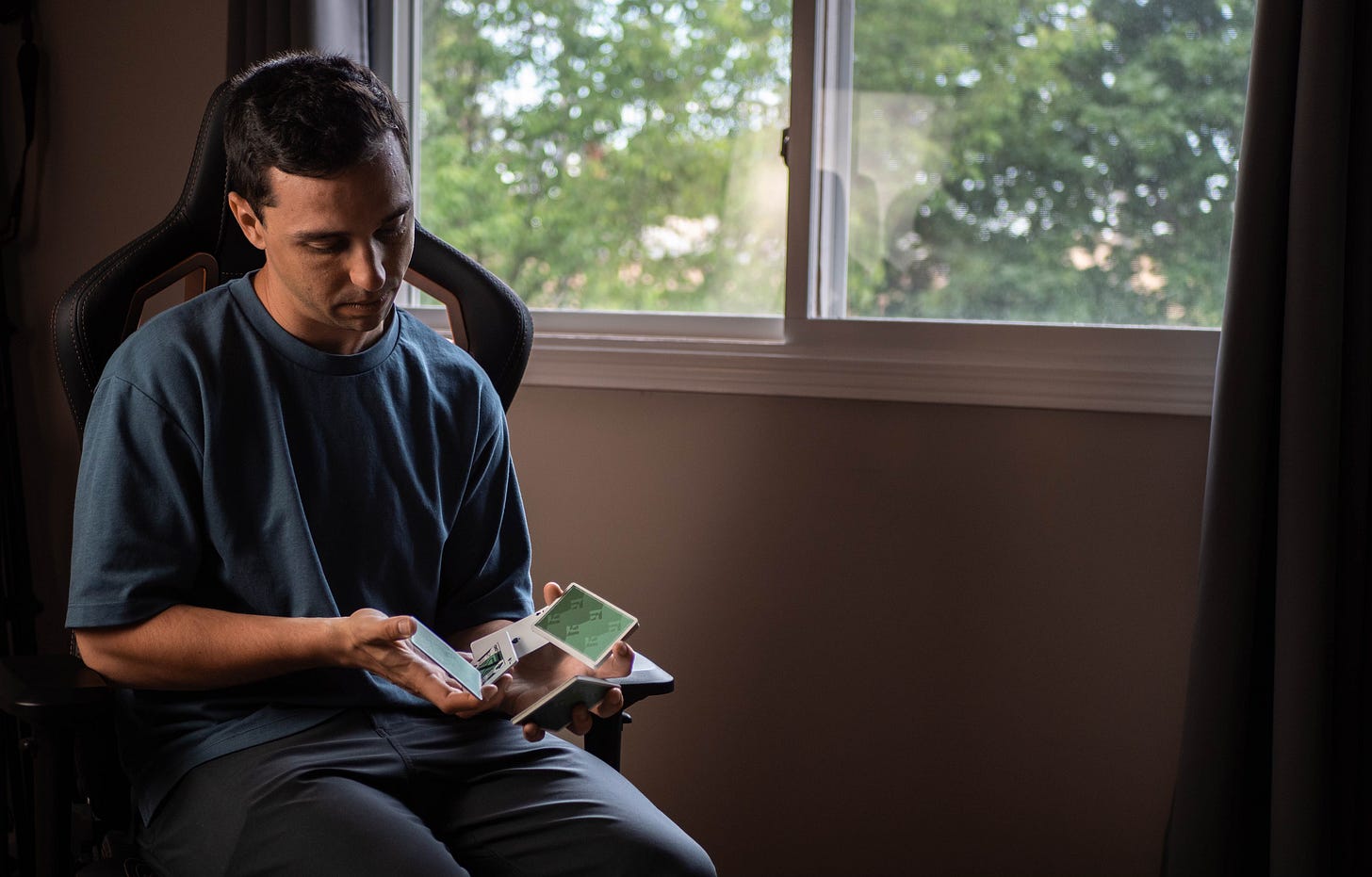The Cardist’s Dilemma: Should You Learn New Moves or Make Your Own?
By Dom Corrado
How to balance creation and exploration based on your goals and experience level
One of the biggest dilemmas in cardistry is deciding when to learn and when to create. Every cardist - beginner or pro - faces this crossroad at some point. Do you dive into tutorials to expand your skill set? Or do you chase originality and push the art forward with something brand new?
There’s no one-size-fits-all answer. But understanding where you are in your journey, and what you want from the artform, can make all the difference.
My Personal Journey Through That Crossroad
While everyone’s path is different, I think my experience reflects a dilemma many cardists face at some point.
These days, I rarely find myself learning new moves. Most of my time is spent either practicing the moves I’ve recently created or brainstorming new ones. That’s largely because I, like many others, used to believe that creating high-quality original material for a polished performance video was the pinnacle of cardistry.
Because of that mindset, learning took a back seat. I’d often spend years compiling material for a video I’d be truly satisfied with.
That said, I’ve come to appreciate that this long-form approach isn’t the best path for everyone. For some cardists, the process of creating a move and sharing it instantly on Instagram is incredibly satisfying. It’s more spontaneous, less pressure-filled, and a great way to stay creatively energized. Even though it’s not something I regularly do myself, I can absolutely see the value and fun in that approach.
The Paradox of Growth
Here’s the twist: while I’m focused on creating, I also believe that learning new techniques is essential for future creativity.
If I’ve only ever made packet cuts and never explored aerials for example, I’m limiting myself. Without exposure to new styles, I’m unlikely to organically fuse them into my own work. And often, those fusions are what make moves feel fresh and dynamic.
That’s where the tension lies - and sometimes, it’s paralyzing. I’ve picked up a deck and not known what to do because the possibilities were endless, yet no single path felt clear.
So... What Should You Do?
To simplify this internal battle, ask yourself two questions:
1. Where are you in your cardistry journey?
2. What do you want out of cardistry right now?
If You’re Just Getting Started…
Begin by building a strong foundation.
Have you explored basic moves in key genres like packet cuts, fans, spreads and aerials?
Are you starting to recognize how moves connect or how one idea can inspire another?
If yes, then it might be time to start creating your own moves. Don’t stress about being revolutionary. At first, it’s about understanding how to link actions together and occasionally stumbling upon something new.
Creation at this stage is just another form of learning.
If You’re More Experienced…
You’ve created moves. You’ve learned a lot. Now you feel... stuck.
This is where your goals come into play.
If you want to be known as a top-tier cardist, you’ll need to go beyond performing difficult moves made by others. The most common route is creating original material that pushes the art forward.
Here’s a process that’s worked for me:
🎥 Create a video or performance showcasing your original material
⏸️ Take a break from creating
🔁 Spend time learning styles and categories you haven’t explored before
When you return to creating, you’ll have a fresh perspective and a broader skill set.
If You’re In It for the Fun
Not everyone wants to push boundaries, and that’s completely valid.
If your main goal is to enjoy cardistry, then lean into learning. Discover new moves, try out different genres, and appreciate the process.
Performing someone else’s move can be just as rewarding, especially when it leads to connection with other cardists. I’ve felt that first-hand, both as the learner and as the creator. It’s energizing.
Quick Tips to Stay Balanced
Here are a few ways to keep your cardistry practice fresh, fun, and fulfilling:
✍️ Keep a running list of moves to learn and ideas to develop
🧭 Explore new styles (e.g. isolations, displays, one-handed cuts)
📹 Film your progress to stay motivated and track your evolution
🗓️ Alternate between weeks where you focus on learning vs. creating
Final Thoughts: Let Cardistry Flow Naturally
At the end of the day, your cardistry journey doesn’t need a rigid plan.
Some days you’ll be a creator, inventing something totally new.
Some days you’ll be a student, mastering a move from a tutorial.
And some days, you’ll just be flowing, shuffling your deck while watching TV - letting the cards move in your hands like second nature.
Whatever path you choose, cardistry is a space for exploration.
It’s your own hands, your own rhythm, your own style.
So lean in, follow the motion, and see where it takes you.
💬 What About You?
How do you balance learning and creating in your own cardistry practice?
Drop a comment below - I’d love to see what you’re working on.
Thanks for reading!
- Dom Corrado
About the author, Dom Corrado:
Hey, I’m Dom Corrado. I’ve been deep in cardistry for over a decade, and these days my focus tends to be on creating compact packet cuts that feel personal and refined. I’m also one half of Squareup Cards, which I run with my close friend Conor O’Kane. We design playing cards, drop clothing, and teach cardistry at all levels through our social channels @squareupcards. If you enjoyed this post, you might like my monthly newsletter, where I share thoughts on creativity, learning, and what’s happening in the cardistry community - you can check it out here. Thanks for reading.
Liked what you read? Write us a comment below to let us know what you thought!


